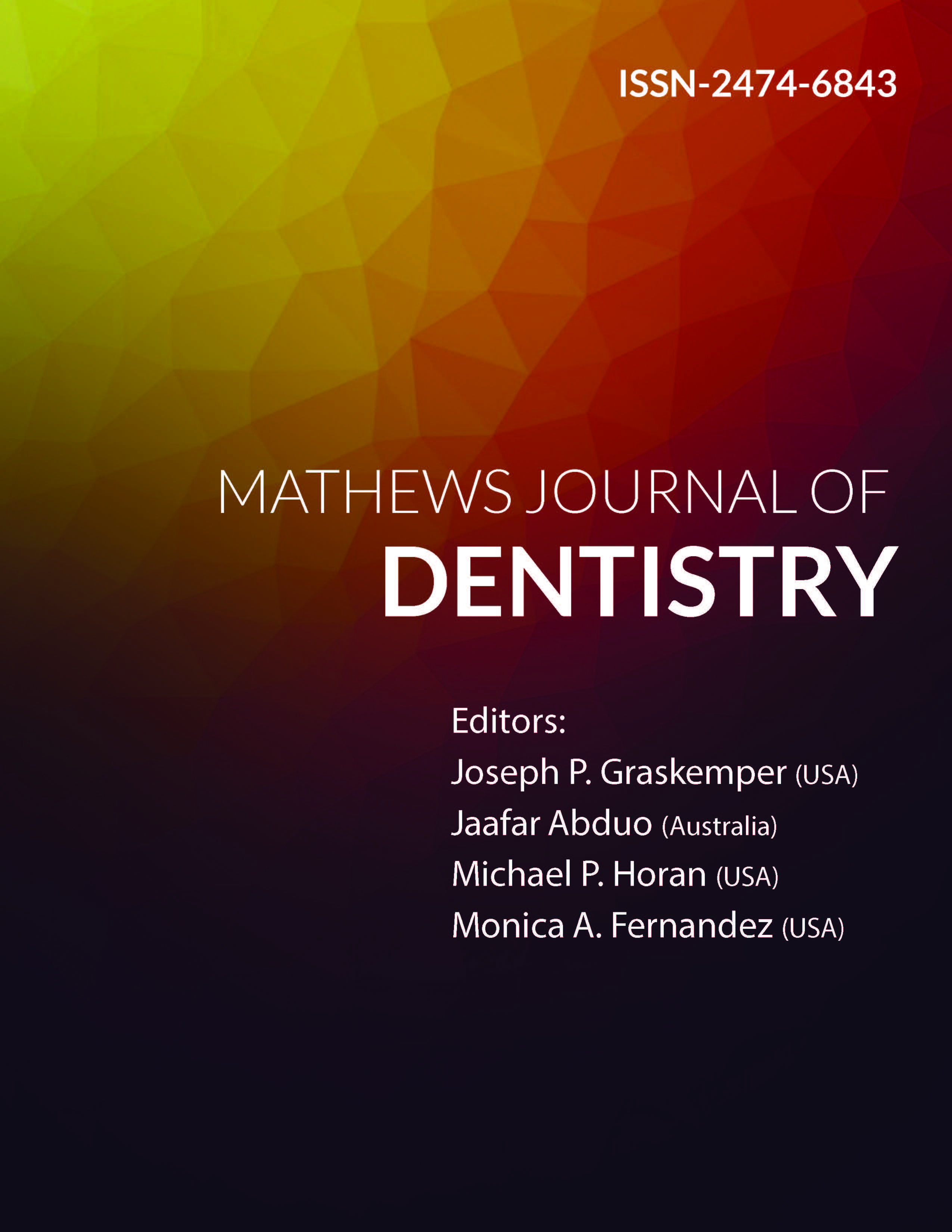
Information Links
Previous Issues Volume 8, Issue 1 - 2024
Management of Permanent Immature Teeth with Lateral Luxation: A Case Report
Wided Glii1,*, Amira Kikly2, Ameni Chadlia Belghuith1, Neila Zokkar3, Nabiha Douki3
1Department of Dentistry, University Hospital, Sahloul, Tunisia, Faculty of Dental Medicine, University of Monastir, Avicenna Street, 5000 Tunisia, and Research Laboratory LR12ES11, University of Monastir, Tunisia
2Associate professor, Department of Dentistry, University Hospital, Sahloul, Tunisia, Faculty of Dental Medicine, University of Monastir, Avicenna Street, 5000 Tunisia, and Research Laboratory LR12ES11, University of Monastir, Tunisia
3Professor,Department of Dentistry, University Hospital, Sahloul, Tunisia, Faculty of Dental Medicine, University of Monastir, Avicenna Street, 5000 Tunisia, and Research Laboratory LR12ES11, University of Monastir, Tunisia
*Corresponding Author: Wided Glii, Department of Dentistry, University Hospital, Sahloul, Tunisia, Faculty of Dental Medicine, University of Monastir, Avicenna Street, 5000 Tunisia, and Research Laboratory LR12ES11, University of Monastir, Tunisia, Tel: (+216) 93546683, E-mail: [email protected].
Received Date: January 29, 2024
Published Date: February 20, 2024
Citation: Glii W, et al. (2024). Management of Permanent Immature Teeth with Lateral Luxation: A Case Report. Mathews J Dentistry. 8(1):43.
Copyrights: Glii W, et al. © (2024).
ABSTRACT
Introduction: Lateral dislocation is a common type of traumatic dental injury. There may be an associated fracture of the bone table. This injury is common among children and can result in pulp canal obliteration or pulp necrosis. Treatment generally consists of repositioning the tooth and applying retention. Case report: The first clinical case involved a patient who consulted us following an oral trauma. The clinical examination revealed a lateral dislocation of 1 mm of the 11 and 21. A reduction and a contention were done the day of the consultation; the removal of the contention was done 15 days later with regular follow-up. The second clinical case involved a patient who consulted us following an oral trauma. The clinical examination revealed a lateral dislocation of 6 mm for 11 and 12 with an associated alveolar fracture. A reduction and support were performed on the day of the consultation. The support was removed one month later. Follow-up examinations were carried out at 3, 6 and 9 months, and endodontic treatment was performed on 11 and 12 following the onset of root canal obliteration. Results: Various factors can affect the outcome of lateral dislocation. The aim of this article was to highlight the different factors that affect the outcome of treatment of immature teeth and the prognosis. Conclusion: When an anterior tooth suffers a lateral luxation, it's considered a significant dental injury demanding careful evaluation before any treatment begins. To ensure the best possible outcome, a number of factors that can influence treatment decisions need to be carefully assessed.
Keywords: Traumatic Dental Injury, Lateral Luxation, Permanent Immature Teeth.